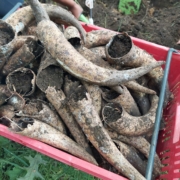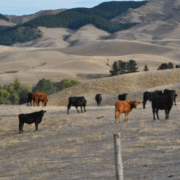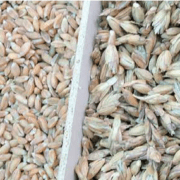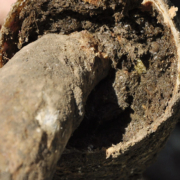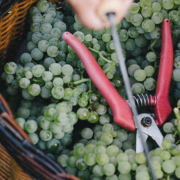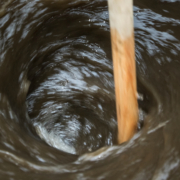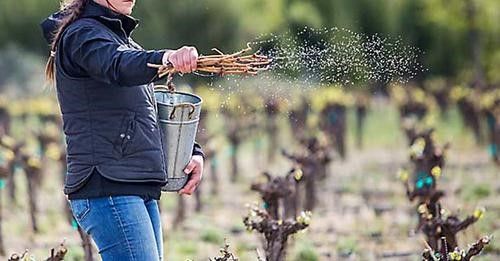Biodynamics decoded
By Monique Macfarlane
A fundamental aspect of biodynamics is working with the power of the cosmos. Having an understanding and using the influences at play, dramatically affects the health, resilience and growth of the entire farm organism,
humans included.
The Biodynamic Farming and Gardening Calendar, is a key tool in utilising the biodynamic preparations, to ensure appropriate timing of applications and allow the qualities of them to be harnessed. The calendar is created from astrological
information, that which is visible in the sky.
The calendar is not just used for the timing of applications of the biodynamic preparations, but also for sowing seed,
transplanting, spray and biological adjustments, harvesting, drying, and rest days are also included!
Many astrological aspects are detailed in the calendar, including the moon’s path and position in the sky, the illumination of the moon, the distance to Earth, crossing the path of the sun, and also other planetary movements. Here are a few aspects to get familiar with first…
Ascending & descending (moon’s path across our sky):
The moon’s daily path across our sky is always changing, and it is always either ascending, where it appears to be higher in the sky at the same time of day or night the next time it is visible, or descending, where it appears to be lower in the sky.
The cycle takes 27.3 days, as opposed to the 29.5 days for the illumination phases (full, new, etc.). Ascending is much like ‘spring/summer’ and the earth breathes ‘out’ whereas descending is much like ‘autumn/winter’ and the earth breathes
‘in’.
Quick tip: sow seeds in an ascending phase of the moon, and transplant or do soil cultivation in a descending phase.
Constellations & the zodiac:
The moon passes in front of the complete circle of constellations in the zodiac approximately every 27.3 days. It
spends between 1.5 and 3.5 days in each constellation due to the different amount of space each sign takes up in the sky.
Each sign corresponds to an element, and a part of the plant, which in turn corresponds to the crops or tasks to tend to.
Taurus, Virgo & Capricorn: Earth – Root: carrot, potato, garlic, soil health
Gemini, Libra & Aquarius: Air – Flower: cauliflower, broccoli, and flowers
Cancer, Scorpio & Pisces: Water – Leaf: spinach, lettuce, leafy greens
Leo, Sagittarius & Aries: Fire – Fruit / Seed: tomatoes, zucchini, peppers, beans.
New moon & full moon (illumination of the moon):
There is more activity underground in the soil towards the new moon, and the flow of sap is less strong. Turning in green
manure, and cutting hay are often done at this time. Seeds sown 48 hours before the actual full moon are markedly larger
than those sown under a new moon influence. One has to bear in mind however, when sowing at this time, plants are often
weaker and susceptible to fungal attack.
Moon opposition Saturn:
The day before this aspect is one of the best times to sow seed, as calcium (Moon) and silica (Saturn) are in balance, which is essential for strong plant growth. Healthy seedlings and healthy soil allow incredible natural resistance to fungal outbreaks, powdery mildew, blight and insect attack.
The biodynamic preparations & timing of use:
Biodynamic preparations are an incredible resource when creating resilient ecosystems and growing nutrient dense
food. Every aspect of each preparation has a deep connection to particular qualities. Here you will find a brief overview of the preparations, along with some cosmic timings to start using them in your system.
Spray preparations:
Preparation 500 (Horn Manure):
Source: Fresh cow manure, and cow horns, buried through the winter in the earth.
Properties: Enhances the life of the soil increasing terrestrial forces, vegetative and expansive
Timing of application: Typically descending moon, root day in the late afternoon to enhance the earthly forces and
microbial activity.
Preparation 501 (Horn Silica):
Source: Clear quartz (Silicon dioxide) triturated into a fine powder, and cow horns, buried through the summer in the
earth.
Properties: Enhances the cosmic forces, contractive providing warmth and light, ripening, and sturdy form.
Timing of application: Typically ascending moon, at sunrise. The constellation depends on the effect you’re after.
Preparation 508 (Equisetum):
Source: Aerial parts of Horsetail (Equisetum arvense).
Properties: Mediates fungal presence, and balances the water element.
Timing of application: A few days before a new moon when plants are already inwardly contracting. Moon opposition Saturn is also a great aspect for fungal control, or preceding the full moon.
The compost preparations:
Preparation 502 (Yarrow):
Materials: Flowers of Yarrow (Achillea millefolium) and a stag’s bladder.
Properties: Helps the soil draw in substances, support structure, heals wounds.
Preparation 503 (Chamomile):
Materials: Flowers of German Chamomile (Matricaria chamomilla) and small intestine of a cow.
Properties: Helps to stabilise plant nutrients and invigorate plant growth, and calm the chaos within the compost.
Preparation 504 (Nettle):
Source: Aerial parts of Stinging Nettle (Urtica dioica) and clay tiles.
Properties: Develops sensitivity in the soil, and helps to stabilise nitrogen.
Preparation 505 (Oak Bark):
Source: Oak bark (Quercus robur) and the skull of a domestic animal.
Properties: Helps increase a plant’s resistance to disease, increases flocculation so the compost doesn’t become anaerobic.
Preparation 506 (Dandelion):
Source: Flowers of Dandelion (Taraxacum officinale) and the mesentery of a cow.
Properties: Activates light influences in the soil.
Preparation 507 (Valerian):
Source: Flowers of Valerian (Valeriana officinalis) and rainwater.
Properties: Protection, temperature regulation.
CPP (Cow Pat Pit):
All of the compost preparations are present in this formulation.
Source: Cow manure has been allowed to age with the influence of all the preparations inserted as a ‘set’.
Properties: This is a great way to get the influence of all the compost preparations out in one go.
Timing: Compost preparations help to regulate the mineral household by bringing it into harmonious balance and are used as a ‘set’, typically added to compost when making, or to CPP. Both are made on a descending moon, root day. In time, compost preparations can be used individually, to activate and enhance desired qualities.
The biodynamic preparations are available for purchase by members, from Biodynamics NZ. Members also receive either a digital or printed calendar each year. To become a member (see inside cover), or to purchase individual copies of the calendar, visit biodynamic.org.nz
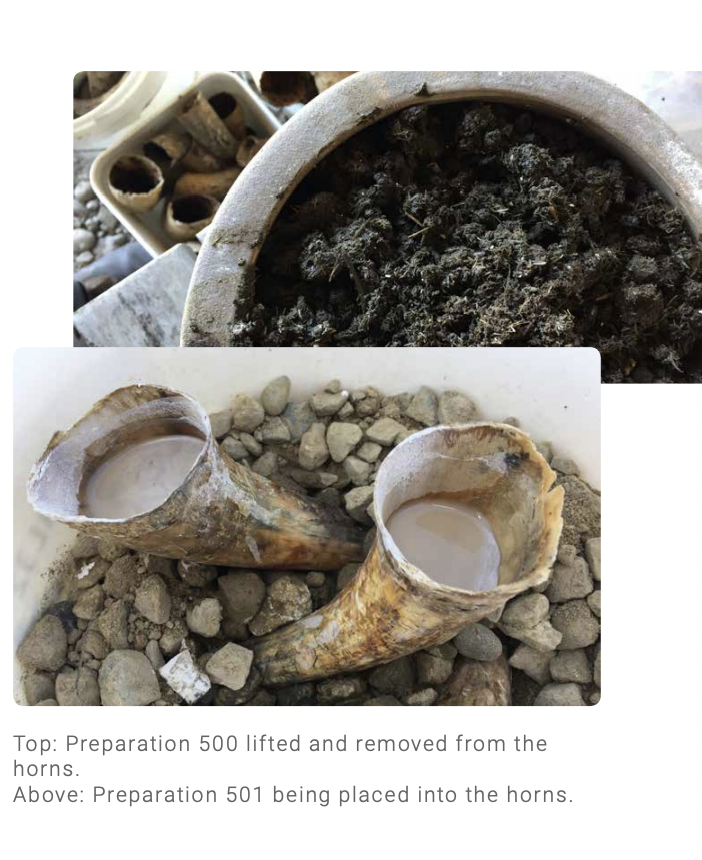
About the author:
Monique Macfarlane of Natural Wisdom teaches a variety of workshops such as biodynamics, planting by the moon, no-dig
food growing, and seasonal approaches to gardening and self sufficiency. Her heartfelt passion for food, localisation, and
thriving nature is the foundation of her incredible offerings.
See www.natural-wisdom.net for more information.

